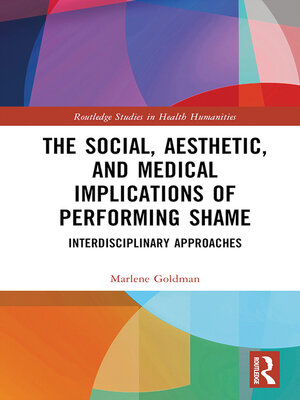The Social, Aesthetic, and Medical Implications of Performing Shame
ebook ∣ Interdisciplinary Approaches · Routledge Studies in Health Humanities
By Marlene Goldman

Sign up to save your library
With an OverDrive account, you can save your favorite libraries for at-a-glance information about availability. Find out more about OverDrive accounts.
Find this title in Libby, the library reading app by OverDrive.



Search for a digital library with this title
Title found at these libraries:
| Loading... |
Performing Shame shows how simulations of shame by North American writers and artists have the power to resist its withering influence.
Chapter 1 analyses the projects' key terms: shame, performance, and empathy. Chapter 2 probes the book's key terms in light of a real-world study of an "empathy device" that aims to teach the public what it feels like to be disabled. Chapter 3 analyses how theatre intervenes in the practice of medicine via standardized patient actors who engage in role play to enhance medical students' empathy for patients coping with shame. Chapter 4 moves from the clinic to the street to examine how The Raging Grannies' public performances contest ageist constructions of older women's bodies and desires. Chapter 5 shifts further from the bedside to the book by exploring Alison Bechdel's graphic novel Fun Home, which challenges the shame projected onto homosexuals. Bringing the study full circle, the final chapter offers close readings of the stories of Alice Munro; like empathy devices, her texts restage scenes of shame to undo its malevolent spell.
This book will be of interest to scholars in theatre and performance studies, health humanities, gender studies, queer studies, literary studies, disability studies, and affect studies.






